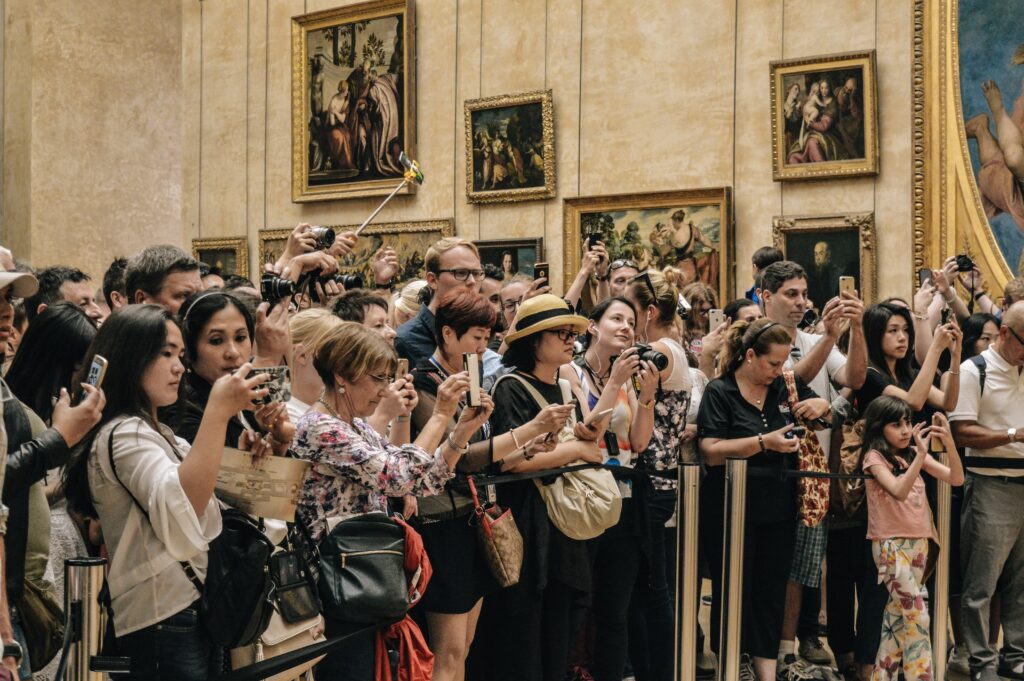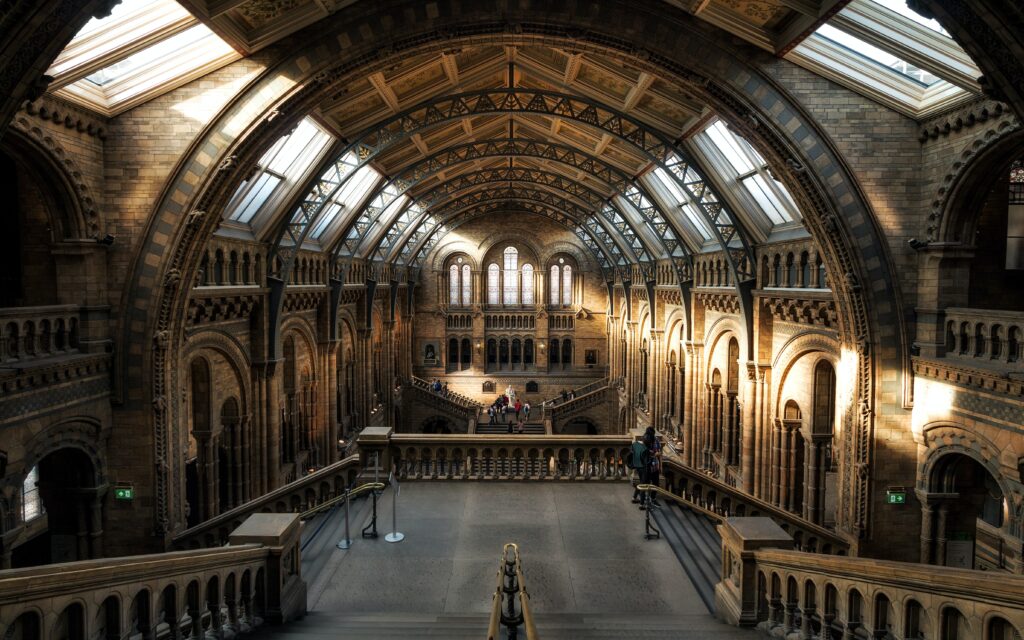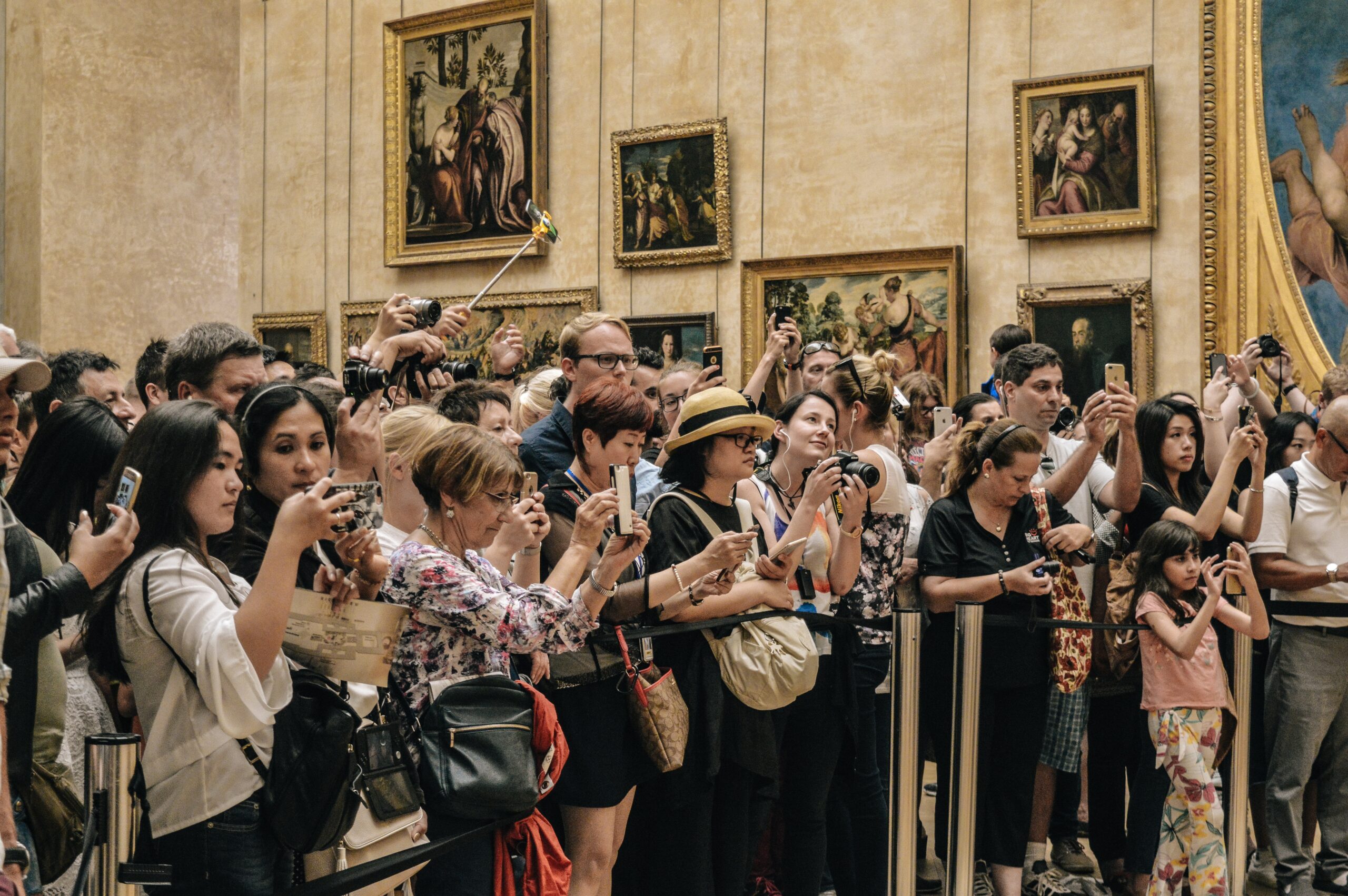In a recent development, the Orlando Museum of Art has found itself embroiled in a legal battle with its former director, Aaron De Groft, who has filed a countersuit insisting that the disputed works displayed at the museum are authentic. The museum had previously accused De Groft of using the institution to promote and sell fake works by renowned artist Jean-Michel Basquiat for personal gain. The controversy arose after the Federal Bureau of Investigation seized the 25 artworks, prompting the museum to terminate De Groft’s employment and later sue him for fraud. De Groft, however, maintains his innocence and asserts that he was not involved in any wrongdoing. This ongoing dispute raises questions regarding the authenticity of the artworks and the reputation of those involved.

Ex-Leader of Orlando Museum of Art Countersues
Claims Paintings Are Authentic Basquiats
Aaron De Groft, the former director of the Orlando Museum of Art, has filed a counterclaim against the institution that fired him. De Groft insists that the roughly two dozen works shown by the museum under his care are authentic paintings by renowned artist Jean-Michel Basquiat. This comes after the museum accused De Groft of using the institution to try to legitimize fake works for personal profit. The museum had fired him last year after the Federal Bureau of Investigation seized the 25 works that had been attributed to Basquiat. They later sued him for fraud, conspiracy, and various breaches following revelations by a Los Angeles auctioneer that he had helped create the artworks and that they were fake. However, De Groft has not been implicated in any wrongdoing by law enforcement and vehemently denies the museum’s accusations. He argues that the claims against him are “absolutely absurd” and that his reputation has been irreparably damaged.
Background of the Lawsuit
The dispute between Aaron De Groft and the Orlando Museum of Art traces back to the FBI’s seizure of the 25 works attributed to Basquiat. The museum took action by firing De Groft and subsequently suing him for fraud, conspiracy, and breaches. The museum accused him of attempting to profit from a scheme, in collaboration with the paintings’ owners, to exhibit the fake works at the museum to inflate their value before a sale. These allegations have been vehemently denied by De Groft, who asserts that he did nothing wrong. He claims that the lawsuit has tarnished his reputation and caused significant personal and professional damage.
FBI Seized 25 Works Attributed to Basquiat
The Federal Bureau of Investigation seized the 25 works attributed to Jean-Michel Basquiat, which were on display at the Orlando Museum of Art. The seizure served as a catalyst for the museum’s decision to terminate Aaron De Groft’s employment and initiate legal action against him. While the authenticity of these artworks remains in question, De Groft maintains that they are genuine Basquiats.
Museum Fired Aaron De Groft
Following the seizure of the Basquiat works, the Orlando Museum of Art opted to fire Aaron De Groft, the museum’s former director. The decision to terminate De Groft’s employment was likely influenced by the allegations of fraud, conspiracy, and breaches made against him. However, it is important to note that he has not been implicated in any wrongdoing by law enforcement.
Sued Him for Fraud, Conspiracy, and Breaches
In response to the alleged misconduct by Aaron De Groft, the Orlando Museum of Art filed a lawsuit against him. The museum specifically accused De Groft of fraud, conspiracy, and breaches related to the exhibition of the supposedly fake Basquiat paintings. The lawsuit reflects the museum’s determination to hold De Groft accountable for any potential wrongdoing and to protect its reputation.

De Groft’s Response to Allegations
Aaron De Groft has categorically rejected the allegations made against him by the Orlando Museum of Art. He denies any involvement in a profit scheme or any intent to deceive the museum or the public. According to De Groft, the accusations are baseless and have caused significant damage to his personal and professional reputation. He is adamant that he has done nothing wrong and has made it clear that he intends to fight back against the museum’s claims.
Rejects Museum’s Claims of Profit Scheme
Aaron De Groft firmly denies the museum’s claims that he was involved in a profit scheme related to the exhibition of the alleged fake Basquiat paintings. He argues that these accusations are without merit and lack evidence. De Groft emphasizes that he acted in good faith and in accordance with his professional responsibilities while overseeing the exhibition. He states that the museum’s allegations have the sole purpose of redirecting attention away from the FBI’s seizure of the works and the damage to their reputation.
De Groft’s Counterclaim
In response to the lawsuit filed against him by the Orlando Museum of Art, Aaron De Groft has countersued the institution. His counterclaim challenges the legitimacy of the museum’s accusations and aims to protect his own reputation. De Groft asserts that the museum’s board of directors had ratified his decision to exhibit the disputed works and points out that the board’s former chairwoman tried to conceal the FBI investigation from the rest of the board. He argues that his fears of angering the chairwoman and losing his job justified his decision to not inform other board members.
Board’s Ratification of Show
Aaron De Groft highlights that the board of directors at the Orlando Museum of Art had approved and ratified his decision to mount the exhibition showcasing the disputed Basquiat works. This information contradicts the museum’s claims that De Groft had acted alone and without proper authorization. By emphasizing the board’s support, De Groft aims to demonstrate that he operated within the boundaries of his role as director.
Chairwoman’s Attempt to Conceal Investigation
De Groft’s counterclaim draws attention to the former chairwoman’s attempts to conceal the FBI’s investigation from the rest of the board. He alleges that Cynthia Brumback, the chairwoman at the time, sought legal representation for herself while keeping other board members in the dark about the ongoing investigation. De Groft maintains that he did not inform the rest of the board out of fear of angering Brumback and jeopardizing his employment.

De Groft’s Explanation for Not Informing Board
Aaron De Groft offers an explanation for his decision not to inform the board of directors at the Orlando Museum of Art about the FBI’s investigation. He states that he chose not to disclose the investigation’s details because he was afraid of provoking the chairwoman, Cynthia Brumback, and risking his job. De Groft believed that raising concerns about the investigation with other board members could potentially lead to negative repercussions for him professionally.
Fear of Angering Chairwoman and Losing Job
Aaron De Groft’s fear of upsetting Cynthia Brumback, the former chairwoman of the Orlando Museum of Art’s board of directors, and potentially losing his job motivated his decision to withhold information about the FBI’s investigation from the rest of the board. De Groft believed that informing other board members could lead to unfavorable consequences for him, including termination. This fear further complicated an already complex and challenging situation.
Settlement Negotiations between Museum and De Groft
The Orlando Museum of Art has engaged in settlement negotiations with Aaron De Groft and his co-defendants following the filing of the lawsuit. However, De Groft clarifies that the initial settlement offer presented to him and his co-defendants was rejected. The rejection indicates that De Groft and his team are not willing to accept responsibility for the allegations against them. It remains to be seen how the settlement negotiations will progress as both parties seek a resolution.
Rejection of Initial Settlement Offer
Aaron De Groft and his co-defendants rejected the initial settlement offer put forward by the Orlando Museum of Art. This rejection indicates that De Groft is standing firm in his belief in his innocence and refusal to accept responsibility for the museum’s allegations. The rejection prolongs the legal battle between the parties and suggests that De Groft is prepared to defend himself and his professional reputation.
Counterclaim as a Response to Museum’s Lawsuit
De Groft’s decision to file a counterclaim against the Orlando Museum of Art can be seen as a direct response to the museum’s lawsuit. The counterclaim aims to challenge the validity of the museum’s accusations and presents an alternative narrative in defense of De Groft’s actions. By filing the counterclaim, De Groft asserts that he is not willing to accept the allegations against him and is prepared to fight to protect his professional reputation.
Museum’s Attempt to Save Face
The Orlando Museum of Art’s lawsuit against Aaron De Groft can be viewed as an attempt to save face in the wake of the scandal surrounding the disputed Basquiat works. The museum’s reputation has been tarnished by the FBI’s seizure of the paintings and subsequent allegations of fraud and conspiracy. By taking legal action against De Groft, the museum seeks to shift the blame and maintain its credibility in the art world.
Reputational Damage to De Groft
Aaron De Groft’s reputation has suffered significant damage as a result of the allegations made against him by the Orlando Museum of Art. The lawsuit and subsequent media coverage have caused harm to De Groft’s personal and professional standing. De Groft’s decision to file a counterclaim reflects his determination to defend his reputation and clear his name from any wrongdoing.
De Groft’s Defense of Professionalism and Good Faith
Aaron De Groft strongly defends his professionalism and good faith throughout the exhibition of the disputed Basquiat works. He asserts that he performed his duties professionally and with integrity, creating a highly successful exhibition that received rave reviews and generated substantial profits for the museum. De Groft’s defense highlights his commitment to his role as director and his belief in the authenticity of the works displayed.
Success of the Exhibition
Aaron De Groft emphasizes the success of the exhibition showcasing the disputed Basquiat paintings. The exhibition garnered positive reviews and set attendance records, indicating its popularity among art enthusiasts. By highlighting the exhibition’s success, De Groft aims to demonstrate that his decisions and actions were based on a genuine belief in the authenticity of the works and were consistent with his professional responsibilities.
De Groft’s Belief in Authenticity
Despite the ongoing dispute surrounding the authenticity of the Basquiat works, Aaron De Groft maintains his belief in their genuine nature. He asserts that he conducted thorough due diligence in researching and authenticating the paintings before the exhibition. De Groft’s unwavering confidence in the authenticity of the works reflects his dedication to his role as director and his commitment to presenting high-quality art to the public.
Reputation Staked on the Realness of the Works
Aaron De Groft’s reputation as the former director of the Orlando Museum of Art is closely tied to the authenticity of the disputed Basquiat works. His stake in the realness of these paintings is not just about proving his innocence but also about preserving his standing in the art world. De Groft’s unwavering defense of the works’ authenticity is a reflection of the trust he placed in their legitimacy and his belief that they deserve recognition as genuine Basquiats.

